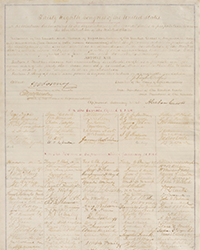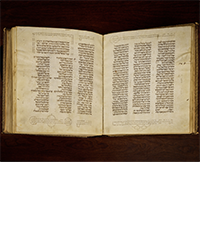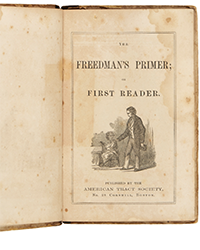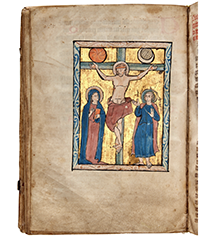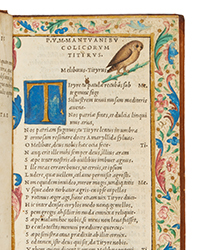The Lawbook Exchange prepared a catalogue of Items on Display for the 65th Annual New York International Antiquarian Book Fair. A good title for this catalogue might be “Murder Most Foul.” There are a lot of crime books in this catalogue, with murder being the favorite. Not too many publications are written about thefts, but murder is something else. Of course, there are also some more standard law books that might be of primary interest to those in the legal profession, rather than the rest of us. Here are a few samples from this collection.
We begin with Confession, though Not the Dying Speech of Ab. Thornton, Who Ought to have been Hanged and Gibetted a Twelve-Month Ago for the Inhuman Rape and Murder of Mary Ashford...27th of May 1817. Actually, Abraham Thornton did not confess and he was acquitted at trial. He was accused of rape and murder of Ms. Ashford when her body was found the morning after a dance in which she was seen with Thornton. Thornton admitted to consensual relations but not the unpleasant things that followed. Eyewitnesses backed his claim and the absence of other evidence resulted in his acquittal. However, the townsfolk evidently did not believe him. The outcry was such that her brother initiated an appeal of murder. That was a rarely used practice that called for a retrial of someone acquitted of murder. However, this appeal allowed the defendant to demand a trial by battle. This practice pitted the defendant and accuser in a duel. William Ashford declined the battle, thereby allowing the acquittal to stand. Still, the people did not believe Thornton's innocence and he left for America the following year. Item 67. $3,500.
William Abbott was a man who undoubtedly deserved what he got. Item 62 is a broadside headed An Account of the Trial, Behaviour, and Execution of Willm. Abbott for the Wilful Murder of Mary Lees...Who Was Executed at the Old Bailey, On Monday Last. March 6, 1822. Abbott and Lees lived together in a boarding house. “Words arose between them” and then much worse. The cause was money. Abbott beat her, over and over through the night. She'd get back on the bed and he'd pull her off and beat her some more. A witness testified he “stamped on her belly several times.” By morning, Mary Lees was dead. When it was announced that she was dead, Abbott expressed his satisfaction, adding that he should take her body to the anatomist's in Brook-street.” With several witnesses, Abbot was unsurprisingly convicted and hanged. The Lawbook Exchange observed, “As fate would have it, Abbott was anatomized after his execution.” Item 62. $2,650.
Laura Fair had been around the block a few times when she met Alexander Crittenden. They were living in Virginia City, Nevada, at the time. Fair had been married four times already but she must have seen Crittenden, a lawyer, as her fifth and permanent husband. Crittenden was married, but told Fair he was single. His wife lived in San Francisco. Eventually, Fair found out, but Crittenden promised to divorce his wife. They had been together for seven years when she found out Crittenden and his wife would be traveling by ferry to Oakland. She boarded the ferry, located Crittenden, and shot him dead. Fair came out with a novel defense. She claimed temporary insanity caused by painful menstruation. The jury wasn't buying. They were probably men and didn't understand. However, Fair managed to turn the case into a women's issue. Women saw her as victim of a legal system that favored men. While in jail, she was visited by Susan B. Anthony and Elizabeth Cady Stanton. It didn't help. She was convicted and sentenced to hang. However, Fair appealed and her conviction was overturned and she was freed. She went on to live a long life, dying at age 82. Item 18 is the Official Report of the Trial of Laura D. Fair, for the Murder of Alex. P. Crittenden, published in 1871. $1,250.
The Shakers long ago became thought of as an eccentric but harmless group, noted for their furniture. They were never large enough to cause too much concern, but there was a small group who opposed them in the 19th century. It generally came from personal experiences. In the case of Mary Dyer, she had joined the Shakers with her husband and five children, but she left, accusing the Shakers of alienating her children. They remained in the Shaker community, and even an attempt by her and a friendly group to take her children back failed. For 50 years, she wrote books against the Shakers and campaigned against them. She attempted to get the New Hampshire Legislature to act against them, leading to this response, A Remonstrance Against the Testimony and Application of Mary Dyer, Requesting Legislative Interference Against the United Society Commonly Called Shakers, published in 1818. Mary Dyer never succeeded in ending the Shakers, but time and celibacy, never good for perpetuating membership, did. Today, there are only two living Shakers remaining. Item 16. $1,250.
Punishment should fit the crime, but a few centuries ago, it could be excessive. Item 63 is The Confession of Percival Cooke and James Tomlinson, Who Were Executed on Friday, April 10th, 1812. on a Drop Newly Erected in Front of Derby Gaol, for Robbing the Houses of Mr. S. Hunt, of Ockbrook Milland, Mr. J. Brentnall, of Locko Grange, in the County of Derby, Nottingham (1812?). That is extreme punishment for a theft, and the writer of this account, unusually, criticizes the English Code of Justice, “stained so deeply with human blood.” The writer urges adoption of reforms suggested by Sir Samuel Romilly so “that our eyes need not be so frequently shocked...at the sight of public executions.” This was the “Bloody Code” that led to many executions in the 18th and early 19th centuries. $2,000.
The Lawbook Exchange may be reached at 732-382-1800 or law@lawbookexchange.com. Their website is www.lawbookexchange.com.


